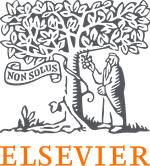Neighborhood and identity living together
Keywords:
proceso formativo, transdisciplinariedad, participación comunitaria., training process, transdisciplinarity, community participation.Abstract
Neighborhood and identity living together proposes a formative process for city making, which employs transdisciplinary formative strategies and culminates in community workshops. The workshop framework links the participants, both as individuals and as part of a collective, and enables them to access knowledge from different fields of specialization -including traditional knowledge- as they focus on urban projects in community spaces at the neighborhood level. This proposal emerges as an alternative to the fragmentation that prevails not only in academia, but also in the cities and in one's very being; it is a process that integrates mind, body and spirit - with the environment, through participatory learning in situ. From theory, the proposed process was formed using the principles of transdisciplinarity as a research methodology. An essential trait of the process is that it stems from one's own endeavors and one's relationship with the "others" involved, regardless of whether the participants are aware of the unfolding process, to find out which levels of reality are included and which are excluded. In practice, is based in a review of ten years of teaching through a theoretical-experimental selfanalysis, allowed this study to observe and assess the evolution and relevance of this particular approach to teaching urban-architectural projects, and to propose a path to its further development. While the formative process and the construction of a trandisciplinarian approach is always a personal choice, there are principles and participatory strategies that foster the development of the process in the collectives involved. Participation in the process can lead to the transformation of students, from actors to authors of significant contributions both to their own training, and to the efforts to save the neighborhood and improve the quality of life of those within it. Thus, it offers a pedagogic contribution in that it grounds the philosophy of transdisciplinarity in the field of research and in the teaching of city making, a teaching that takes place both in the classroom and in the neighborhood, among students and neighbors, and involves real people rather than alienating abstractions.
Downloads
References
Balibrea Mari Paz (2004). Barcelona: del modelo a la marca. Consultado en la red internet en e-barcelona.org: http://e- barcelona.org/index.php?name=News&file =article&sid=5932
Bohigas, Oriol (2004). Contra la incontinencia urbana: reconsideración moral de la arquitectura y ciudad. Barcelona, España: Editorial Electa.
Bohm, David (1996). Sobre el diálogo. Barcelona: Kairós.
García Canclini, Néstor (2008). Arte público - arte privado. Programa televisivo: Arte en construcción. México D.F.
Heron, John (1999). The complete facilitator`s handbook. Londres, Koganpage, Traducción libre de Kaplan, Rae, 2008.
Kitahara, Toshio. City Identity and People's Life,Tokyo, Japan, Yosuke Mamiya, ed., Iwanami Shoten Co., Ltd., 2005
M. Night Shyamalan (2004). La aldea ( The village ). USA: Touchstone Pictures.
Marina José Antonio, Válgoma de la, María. (2007): La magia de escribir. México. D.F: Editorial Plaza Janés.
Mendoza Kaplan, Laura (2013). Barrio, Identidad y Convivencia, un proceso formativo transdisciplinario en torno al proyecto de espacios comunitarios.Tesis doctoral. México: UNAM
Nicolescu, Basarab (2002) Manifesto of transdisciplinarity. Nueva York, State University of New York Press.
Porter Luis (2008). Imaginación y educación: Complejidad y lentitud en el aprendizaje del diseño. México: Universidad Autónoma de Ciudad Juárez. Ciudad Juárez Chihuahua,
Rubio Gutiérrez, Harmida (2009). Proyecto, narrativa, estética y simbolismo para un proceso urbanístico veracruzano con una nueva visión. Coloquio de metodologías para comunides rurales y suburbanas. Xalapa, Veracruz, México: Universidad Veracruzana.
Rubio Gutiérrez, Harmida (2009). Escribir Arquitectura: un espacio para la diversión, la reflexión y la catarsis. Blog de arquitectura y escritura. www.escribirarq.blogspot.com
Solá Morales Manuel (2005). Cuatro paradigmas para un curso de ética urbanística. Los territorios del urbanista. Ediciones UPC. Barcelona, España.
Tenorio Trillo, Mauricio (2004). El urbanista. Fondo de Cultura Económica. México. D.F.
Tonucci, Francesco (2006). La ciudad de los niños. Un modo nuevo de pensar la ciudad.
Vargas, Enrique (2008). Teatro de los Sentidos. www.teatrodelosentidos.com
White Michael, Epston David (1993). Medios narrativos para fines terapéuticos. Editorial Paidós. Buenos Aires, Argentina
Downloads
Published
How to Cite
Issue
Section
License
Copyright (c) 2017 CONTEXTO. Revista de la Facultad de Arquitectura de la Universidad Autónoma de Nuevo León

This work is licensed under a Creative Commons Attribution-NonCommercial 4.0 International License.
The authors who publish in this journal accept the following conditions:
1. The authors keep the copyright and give the journal the right of the first publication, with their content registered under the Creative Commons License, which lets third parties to use the published material as long as they mention the authors and the first publication from the journal.
2. The authors can make other independent and additional contractual agreements for the non-exclusive distribution of the version of the article published in the journal (for example an institutional repository or a book) provided that they explicitly mention that the content was first published in CONTEXTO. Revista de la Facultad de Arquitectura de la Universidad Autónoma de Nuevo León..










.png)





